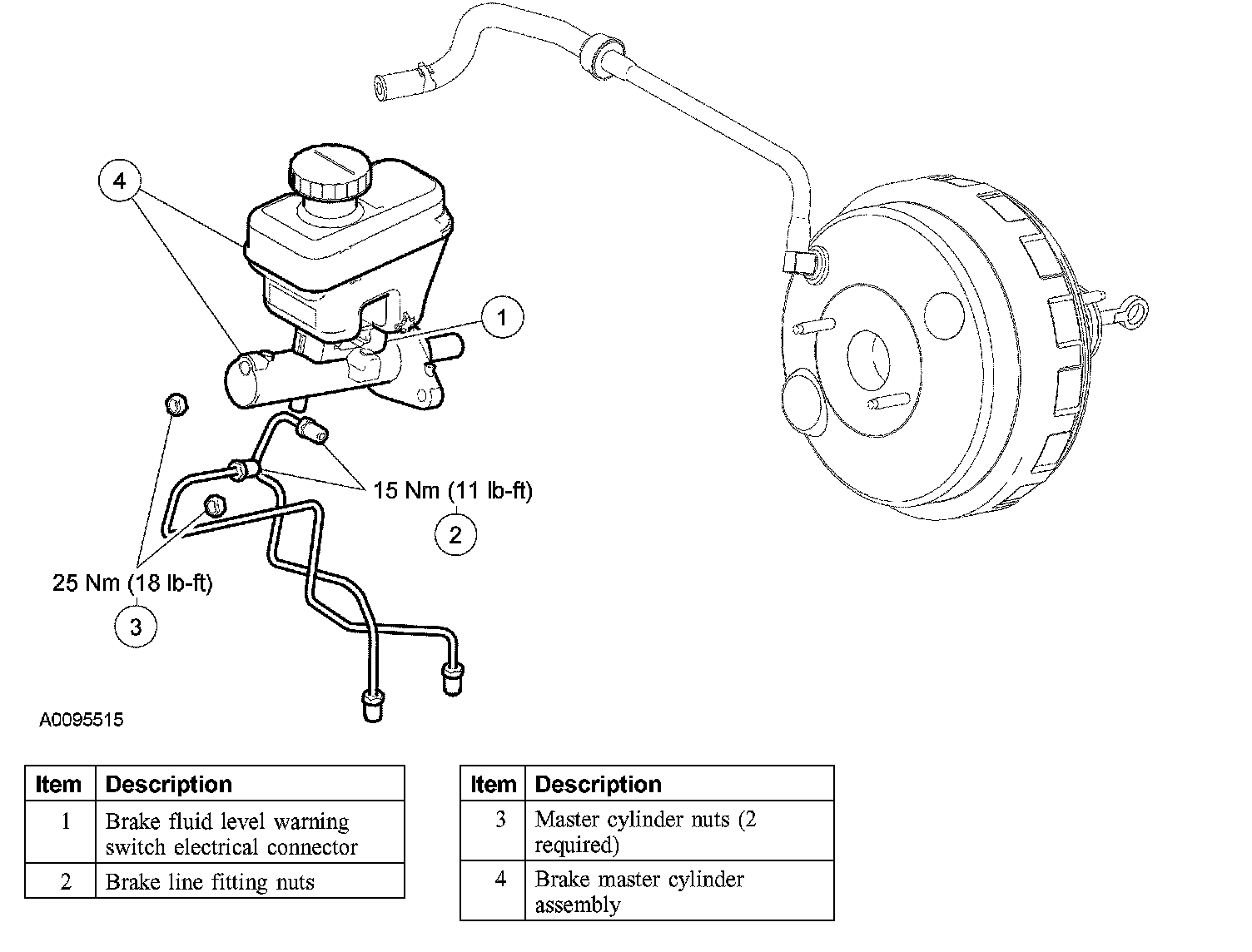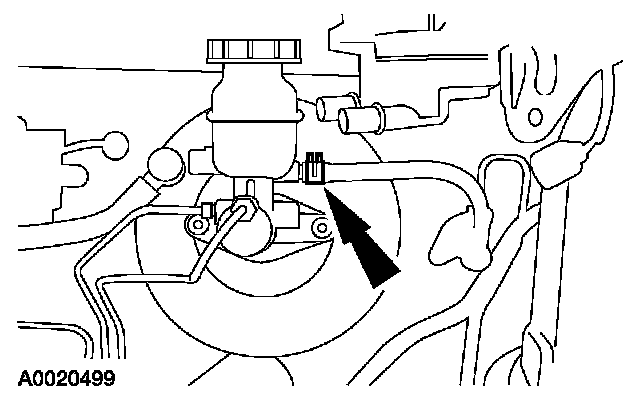Brake Master Cylinder: Service and Repair
Brake Master Cylinder
Material

Removal and Installation
WARNING: Use of any other than approved DOT 3 motor vehicle brake fluid will cause permanent damage to brake components and will render the brakes inoperative. Failure to follow these instructions may result in personal injury.
WARNING: Brake fluid contains polyglycol ethers and polyglycols. Avoid contact with eyes. Wash hands thoroughly after handling. If brake fluid contacts eyes, flush eyes with running water for 15 minutes. Get medical attention if irritation persists. If taken internally, drink water and induce vomiting. Get medical attention immediately. Failure to follow these instructions may result in personal injury.
CAUTION: Brake fluid is harmful to painted and plastic surfaces. If brake fluid is spilled onto a painted or plastic surface, immediately wash it with water.
1. Disconnect the battery.
2. Disconnect the brake fluid level warning switch electrical connector.
3. Using a suitable suction device, remove the brake fluid from the brake master cylinder reservoir.

4. If equipped with a manual transmission, disconnect the clutch master cylinder feed.
^ Plug the clutch master cylinder feed hose.
5. If installing a new brake master cylinder, remove the brake fluid reservoir.
6. Disconnect the 2 brake line fitting and plug the brake lines and the brake master cylinder ports.
^ To install, tighten to 15 Nm (11 ft. lbs.).
7. NOTE: Install new master cylinder nuts.
Remove and discard the 2 master cylinder nuts.
^ To install, tighten to 25 Nm (18 ft. lbs.).
8. Remove the brake master cylinder assembly.
9. To install, reverse the removal procedure.
^ Bleed the master cylinder.
^ If equipped with a manual transmission, bleed the clutch master cylinder.